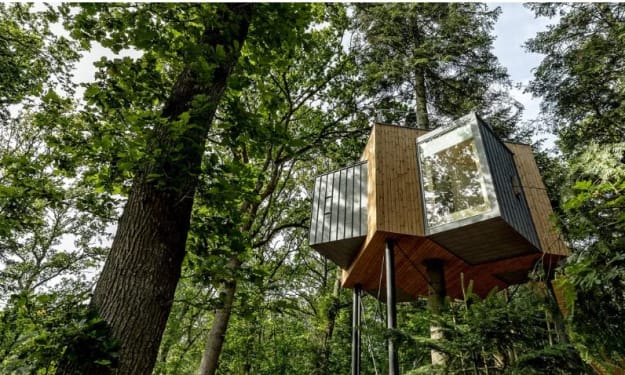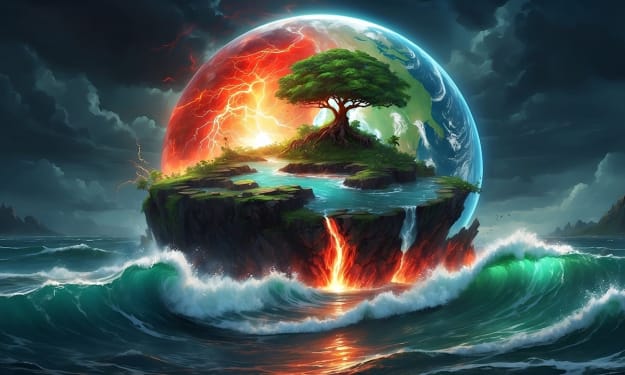
n October 2014, Lotfi Rabaoui was travelling the shallow sandy waters near Ghannouch, a small coastal town in the Gabes Gulf in Tunisia, with a group of local fishermen. Traversing the beds of seagrass and algae, the fishermen made an unusual catch.
Tangled in their net was a species of crab, Portunus segnis or blue crab, that wasn't native to the region. More remarkable still, was that the fishermen didn't find just one blue crab – their nets had captured 24 of them.
Rabaoui, at the time researcher at the Faculty of Science of Tunis at the University of Tunis El Manar, noted the discovery with interest. Little did he know, however, that a year later this non-native, or alien species would become a national curse.
Soon after, the blue crab population exploded. Hakim Gribaa, a fisherman on the island of Djerba, remembers it as if it were yesterday. "It was panic stations," says Gribaa. "The crab represented almost 70% of my fishing catches and I did not know what to do with it."
You might also like:
The promise and danger of Scotland's bog
How India's sacred groves protect nature
Why storms kill more women
The blue crabs were prolific, reproducing up to four times a year with litters of 100,000 per female. This crustacean is "very aggressive", says Gribaa – it destroys nets, and nips fishermen and other fish. The terror the crabs caused was such that they became known locally as "Daesh", the Arabic acronym for the group calling itself Islamic State.
At first, the fisherfolk's livelihoods were overturned. "We were clueless," says Fethi Naloufi, a fishing engineer and head of the Interprofessional Group of Fishery Products in Zarzis, a public organisation responsible for promoting fisheries and aquaculture in Tunisia. Even disposing of the crab bycatch became a challenge. "They remained piled up in the port, or they were thrown back into the sea," says Naloufi.
The blue crab has upended Tunisia's fishing industry in more ways than one. But after the initial shock, it has now become one of the region's most sought-after seafoods.

The blue crab originates in Indo-Pacific waters and reached the Mediterranean Sea in 1898, around a decade after the Suez Canal opened. Since then, the crustacean has been recorded in various areas in the Mediterranean, from the Levantine basin up through Sicily, spreading according to environmental conditions, its migration capacity and shipping activities.
"As for many invasive species, the proliferation of the blue crab has intensified with the warming of surface waters due to climate change, and with the increase of maritime traffic," says Jamila Ben Souissi, a researcher on biodiversity and climate change in the Mediterranean and member of the Mediterranean Science Commission.
Indeed, the blue crab is far from alone in making the journey to the Mediterranean. The rabbitfish (Siganus rivulatus and Siganus luridus), is another particularly successful new entrant. These fish devour the vegetation that provides habitat to native species, decreasing native vegetation cover – mostly canopy algae – by as much as 65% in Greece and Turkey.
"Given that rabbitfish are a tropical species generally confined to warm waters, we think that their expansion is linked to [ocean] warming," says Adrianna Verges, a researcher on the ecological impacts of climate change at the University of New South Wales in Sydney and an author of the Greek and Turkish survey. "In our study, we found that large populations of rabbitfish are confined to the warmer eastern parts of the Mediterranean."
Another new entrant to the Mediterranean is of even greater concern. Sometimes considered the single most damaging invasive species known to science, the lionfish (Pterois miles) is a highly aggressive fish sporting fierce venomous spines. Well established in southern and eastern areas of the Mediterranean Sea, it is now heading west and north towards the Aegean and Ionian seas. The lionfish eats large quantities of small native fish and crustaceans, and its stomach can expand up to 30 times its original volume to accommodate them.
Experiences from other parts of the world show how much damage it can do: in the Bahamas, it was responsible for a 65% reduction in its prey biomass in just two years. In the French West Indies, the cost of this invasion is estimated at more than €10m ($10.2m/£8.4m) a year through damage to the fishing and tourism industries. A recent stomach-contents analysis in Mediterranean lionfish revealed that 95% of their prey were ecologically and economically significant native fish.

Overall, the Mediterranean Sea is the most invaded in the world, with 986 alien species listed by WWF in 2021, of which 10% are categorised as "invasive" – meaning they are likely to cause economic or environmental harm.
"In recent decades, there has been an explosion in the numbers of alien species establishing themselves across the basin, with catastrophic consequences for native biodiversity – interaction with the new arrivals is completely disrupting stable ecosystems," write the authors of the WWF report.
The Mediterranean is changing, and our only solution is to adapt – Jamila Ben Souissi
The connectivity of the Mediterranean to other oceans is part of the challenge. Most of these invasive species come from the Red Sea or Indian Ocean and reach the Mediterranean via the Suez Canal.
"The Mediterranean is changing very quickly," says the Mediterranean Science Commission's Ben Souissi. The blue crab larvae require an optimal rearing condition under a constant water temperature at 30C (86F). Temperatures in the Mediterranean are going up 20% faster than the global average, with sea level rise expected to exceed 1m (3.3ft) by 2100.
Rising temperatures mean that arrivals from warmer oceans can survive in increasingly large areas of the Mediterranean, where just a few decades ago the waters would have been too cold for them. Where native species are already under pressure from intensive fishing, invasive species can expand all the more readily.
Invaders become assets
"The Mediterranean is changing, and our only solution is to adapt," says Ben Souissi. Climate change means it will likely be impossible to stop the continued spread of destructive invaders across the Mediterranean. But in a region where so much depends on healthy ecosystems, there is an urgent need to act.

Today, as the blue crab is a dominant species in the Tunisian south, this invasive predator has become a valuable asset, and fisherfolk have learned to live with it in their traps.In the last four years, with the help of public subsidies, they have created an entire value chain out of the new arrivals. They've figured out how to process and package the crabs in more than 30 factories and market it for export worldwide.
"At first, the blue crab market did not exist in Tunisia," says Samia Lamine, the coordinator for the coastal resilience project in the port of Ajim at Djerba island, funded by the United Nations' Special Climate Change Fund and the UNDP. "People were afraid of it."
But it didn't take long for local people to adjust. While waiting for the government to react and launch a national strategy, "we organised to enable fishermen to sell their hauls to nearby factories," says Naloufi of Tunisia's Interprofessional Group of Fishery Products.
Fisherfolk, the UNDP and Tunisian government agencies launched programmes to train fishermen to harvest blue crab. "We had to invent new ways of fishing, starting with the traps," says Lamine. After trying several designs, the fishermen of Ajim settled on a traditional cylindrical trap with a greater number of entrances to accommodate the crab.

A few blocks away from the port of Ajim, a new crab processing plant, Bena Pesca, opened towards the end of 2021. "We understood that there was a real need from the emerging blue crab market in Tunisia," says Mourad Ben Ayed, the manager. For now, the domestic market doesn't have much of a taste for the crab. "Everything we pack here is sent abroad. For the moment, our best customers are Koreans."
In 2021, exports of Tunisian blue crab reached 7,600 tonnes, worth 75.6 million dinars ($24m/£19.8m) – twice as much as in 2020, according to the Zarzis interprofessional grouping of fishery products. The Asian market is the top customer of Tunisian blue crab, but the crabs are also sought after in Italy, Spain, the United States and Persian Gulf countries.
Meanwhile in Cyprus, reported as the first EU state affected by invasive species that have travelled the Suez Canal, there are similar projects to deal with the surge in lionfish over the past decade. One, the RelionMed-Life project launched in 2017, aims to make Cyprus the "first line of defence" against the invasion of this species in the Mediterranean, by exploring and creating its local commercial uses.
Local restaurants have started incorporating the lionfish on their menus, while its soft and colourful fins are also used to create jewellery and other artwork, providing an income for fishermen, divers, restaurants, jewellery shops and the local tourism industry.
The rabbitfish, meanwhile, has become quite an important commercial fish in several regions in the Mediterranean, "where they are very popular and highly prized", says Verges of University of New South Wales.

It takes a concerted effort, quick thinking and adaptability to turn an invasive species into an opportunity, but in some Mediterranean communities it seems to be working. "We have observed a notable decrease in their numbers. This is also confirmed by the fishermen," says Marouene Bdioui, a researcher at the Tunisian National Institute of Marine Science and Technology. According to his research, the average blue crab catch tripled in 2020 compared with 2018.
"We have mobilised in an effort of resilience and adaptation. It is now necessary that this becomes sustainable," he says. To do so, he believes fishing should remain artisanal to protect small-scale fishermen, the most vulnerable to climate change.
In the long term, it remains to be seen whether the new industries springing up to make use of invasive species will be enough to rebalance ecosystems and improve biodiversity. With climate change and extensive shipping, the native ecosystems of the Mediterranean are under pressure from many different sides. But in the short term, such projects are a lifeline to the local fishing communities.
"Today, the blue crab is our primary source of income," says Hakim Gribaa, the fisherman at Djerba island, Tunisia. "We want it to stay."






Comments
There are no comments for this story
Be the first to respond and start the conversation.